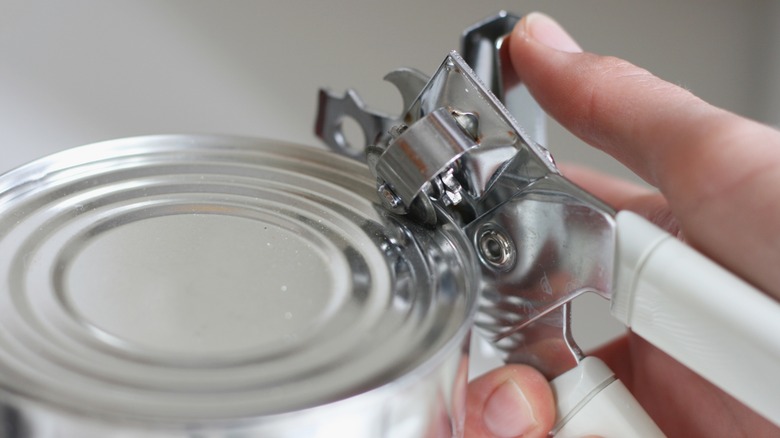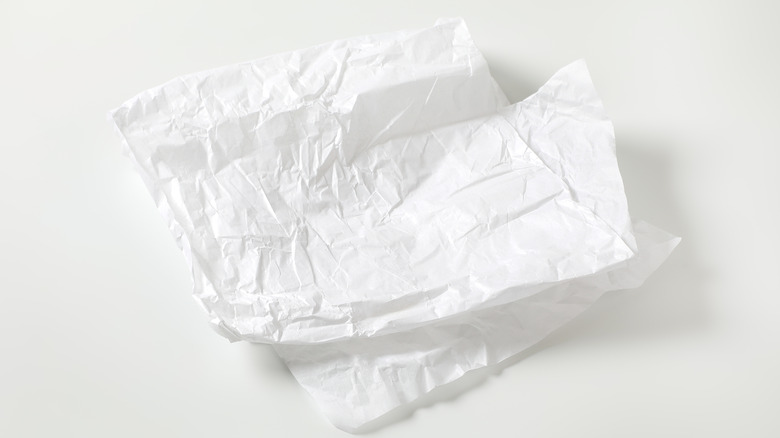The Unexpected Way To Effectively Clean Your Can Opener
Fresher is better, but not always. Canned foods offer convenience, cost-effectiveness and similar levels of nutrients in a pinch. Of course, the use of a can opener makes accessing the tasty foods inside these metal tins even easier. With the frequent use of can openers, it's fair to wonder whether they do need a good cleaning every now and again. This is why we're sharing the unexpected way to effectively clean your can opener.
A far cry from the chisel and a hammer first used to open cans of beans, Smithsonian Magazine reports that American inventor Ezra J. Warner patented the first opener in 1858, before undergoing several rounds of improvements made by William Lyman who employed a rotary cutter, and then Charles Arthur Bunker who introduced the crank design we know today.
Surprisingly, can openers are ranked among the top 10 germiest kitchen gadgets according Today. Whether it be mold, yeast, salmonella, or E.coli, this tool should be cleaned regularly as food residues can be left on the blade, fueling the spread of bacteria to other cans, explains The Active Times. If you're wondering what to do about that can opener in your drawer that's loaded with gunk, crust and rust, look no further!
A new use for wax paper
Traditional methods, as described by Kitchn, often include soaking can openers in a vinegar solution, before scrubbing with a soapy toothbrush and rinsing clean. While a less strenuous option would be sticking the utensil into the dishwasher, there's an even easier hack.
For a quick and thorough alternative, Apartment Therapy recommends using wax paper to clean your can opener—plus, the wax can even lubricate the gadget. All you need to do is fold the wax paper several times before using your can opener to clamp down, turning the crank to dislodge gunk. Repeat the process until all grime is gone.
If you want to keep things extra hygienic, Jar and Can Openers recommends following up by using food-grade hydrogen peroxide for disinfection. Should your old utensil need some extra TLC, you can also pour a few drops of food grade mineral oil on a fresh sheet of parchment and repeat the process of clamping and turning. But, if your opener is too far gone, it might just be time to replace it with a newer model!

